#gruiformes
Text

[2922/11080] Dark-winged trumpeter - Psophia viridis
Order: Gruiformes
Family: Psophiidae (trumpeters)
Photo credit: Peter Kondrashov via Macaulay Library
95 notes
·
View notes
Text

Common or Eurasian Coot (Fulica atra), family Rallidae, order Gruiformes, found across much of Eurasia, northern Africa, and Oceania, Australia and New Zealand
The remarkable feet of coots are fissipalmate (lobed/partially webbed), which help them swim and walk across soft mud (without sinking).
Coots are not ducks, but are more closely related to rails and gallinules/swamphens (and more distantly, cranes).
photograph by Pat L. on flickr
#coot#waterfowl#fulica#rallidae#rail#gruiformes#bird#ornithology#animals#nature#europe#asia#australia#africa
5K notes
·
View notes
Text
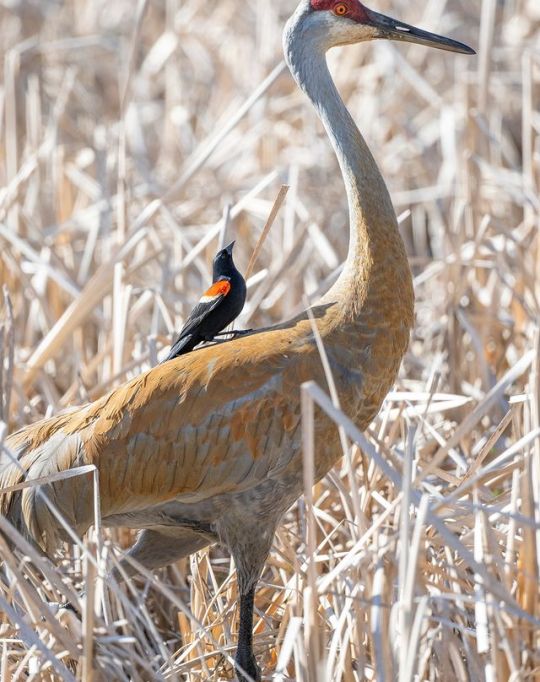
Sandhill Crane & Red-winged Blackbird
#sandhill crane#crane#Antigone canadensis#Gruiformes#Gruidae#Antigone#red winged blackbird#blackbird#Agelaius phoeniceus#Passeriformes#Icteridae#Agelaius#bird#upl
3K notes
·
View notes
Text

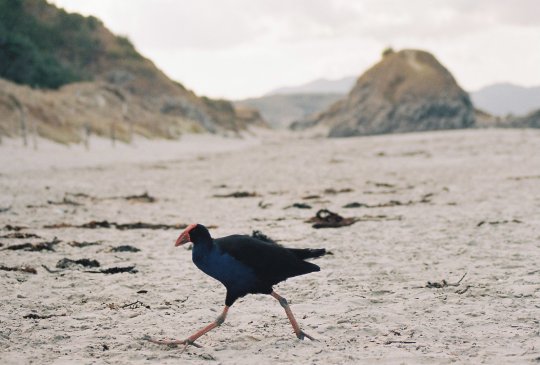

Pūkeko - 2020
#pūkeko#nature photography#film photography#photography#canon ae1#50mm#new zealand#100-300mm#gruiformes#rallidae#bird photography#birds#birdwatching
866 notes
·
View notes
Text





The red crowned crane traditionally nests in marshes, but most have been drained. So the cranes are raising their offspring in an irrigation channel. All through the summer, the chick is entirely dependent its parents for food. The family won't be able to move on until the chick can fly.
BBC Earth
2K notes
·
View notes
Text

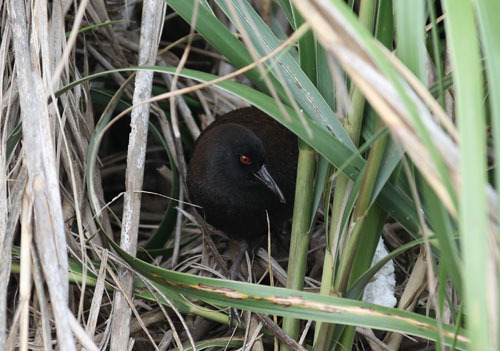

Access Denied: The Inaccessible Island Rail
The Inaccessible Island rail (Laterallus rogersi) is a rarely seen member of the rail family, Rallidae. Part of the reason for its obscurity is the place in which it resides: Inaccessible Island, part of the Tristan da Cunha archipelago in the southern Atlantic Ocean. These islands are extremely remote, and until 2019 it was unclear how L. rogersi even came to be there. We now know that the species colonized the island some 1.5 million years ago, originally coming in from South America and subsequently losing its ability to fly.
In addition to its unique evolutionary history, the Inaccessible Island rail's greatest claim is that it is the smallest flightless bird in the world. Individuals weigh between 35 to 49 g (1.2–1.7 oz) and can be 13 to 15.5 cm (5.1–6.1 in) long from beak to tail. Members of both sexes are dark brown with red eyes; some may have white striping along the underbelly or wings. Females tend to be slightly smaller and lighter in color than males.
The Inaccesible Island rail can be found on all habitats on the island in which it inhabits; these include low mountains and fern brush though the species is most abundant in the grasslands that grow close to the rocky shore. Within these habitats, L. rogersi is largely diurnal. They freely forage for invertebrates, including earthworms, beetles, and moths, as well as seeds and berries; as they have no natural predators they have few defenses against potential threats, although they can run extremely fast when alarmed.
Adults are highly territorial, and when two rivals of either sex encounter each other they will display by lowering their heads, circling each other, and calling loudly until one of them concedes. Males and females mate for life, and build nests in the tall grass. The breeding season is between October and January, in late summer, and females lay a clutch of 2 eggs. Both parents take turns incubating the eggs until they hatch. Chicks can be vulnerable to predation by the migratory brown skua, so parents guard the nest fiercely. The time it takes for chicks to fully mature is unknown, as is the average lifespan in the wild.
Conservation status: The Inaccessible Island rail is considered Vulnerable by the IUCN. The island's population is believed to stand at about 5,600 adult birds. While the island's ecology is currently stable, researchers believe the species would be seriously imperaled if invasive species such as house mice, feral cats and brown rats were introduced. Access to the island is currently restricted, and the island has been declared a nature reserve by the Tristan da Cunha Island Council.
If you like what I do, consider leaving a tip or buying me a kofi!
Photos
Peter G. Ryan
#inaccessible island rail#Gruiformes#Rallidae#rails#birds#islands#island birds#grasslands#grassland birds#Atlantic ocean#animal facts#biology#zoology
940 notes
·
View notes
Text

Day 20 of extinct birds - the Tahiti rail
Though no specimens exist of the Tahiti rail, we do have a painting and a detailed description showing how they looked quite striking for a rail and more unique within its genus. However, little else is known about them. They were extinct on Tahiti by the end of the 19th century, but it's possible they lived until the 1930s on the nearby island of Mehetia.
#gruiformes#bird of the day#bird art#extinct animals#birds#digital illustration#bird#daily art#ornithology#digital art
217 notes
·
View notes
Text

A weka, or Māori Hen (Gallirallus australis) inspects stones in Aotearoa
by Gregory "Slobirdr" Smith
#weka#rails#birds#gallirallus australis#gallirallus#rallidae#gruiformes#aves#chordata#wildlife: aotearoa#wildlife: oceania
291 notes
·
View notes
Text


Gruiformes: Porphyrio melanotus
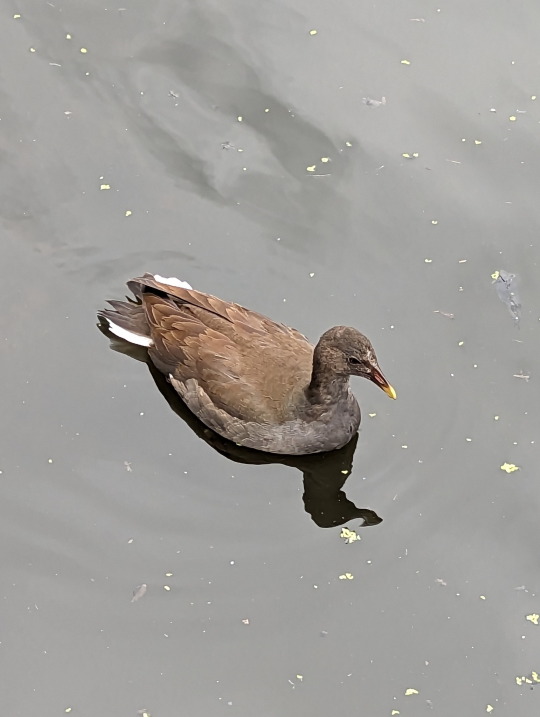

Gruiformes: Gallinula tenebrosa

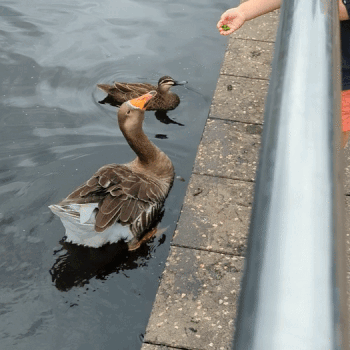
Anseriformes: Anser anser domesticus × anser cygnoides domesticus


Anseriformes: Chenonetta jubata
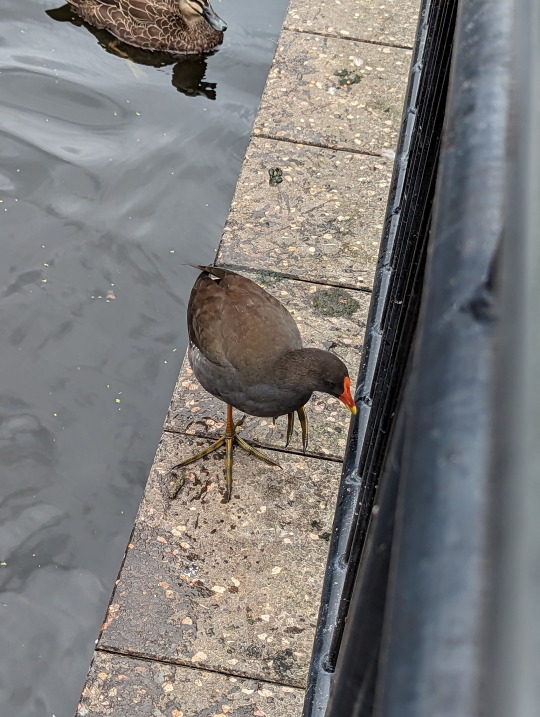
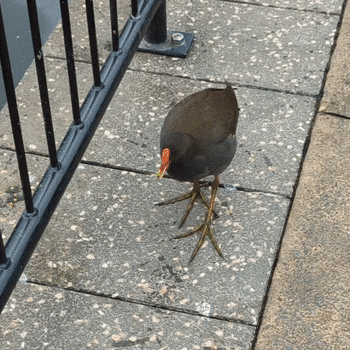
Gruiformes: Gallinula tenebrosa
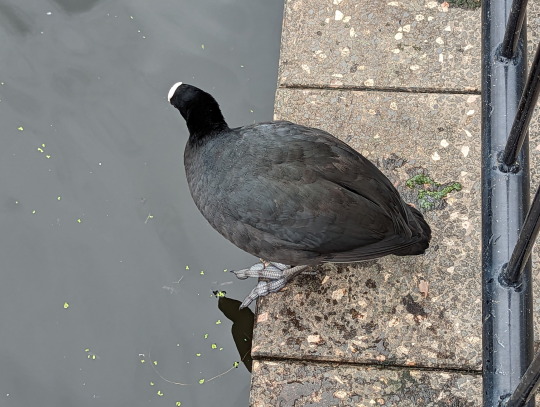
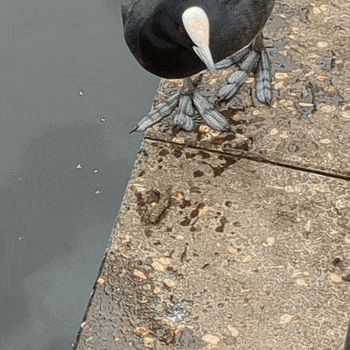
Gruiformes: Fulica atra, note the wacky feet
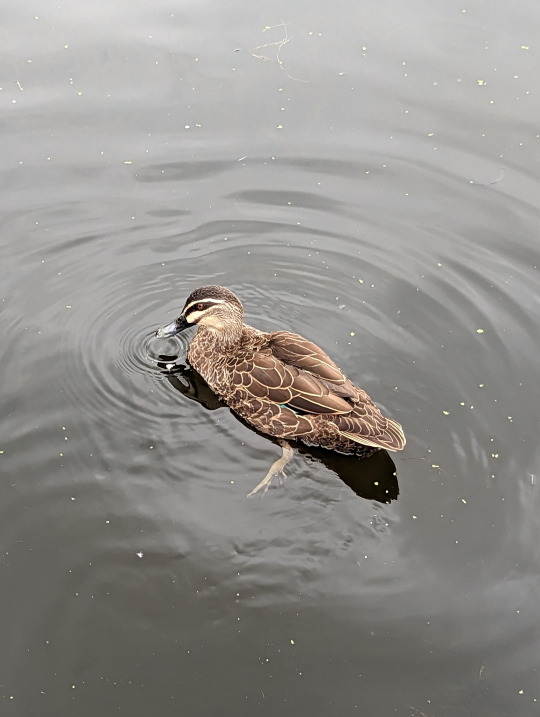
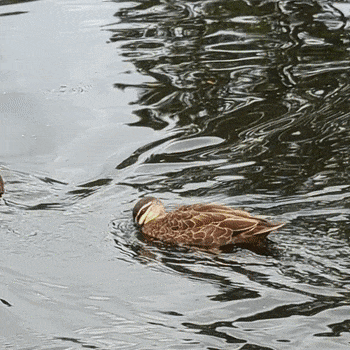
Anseriformes: Anas superciliosa ssp. superciliosa
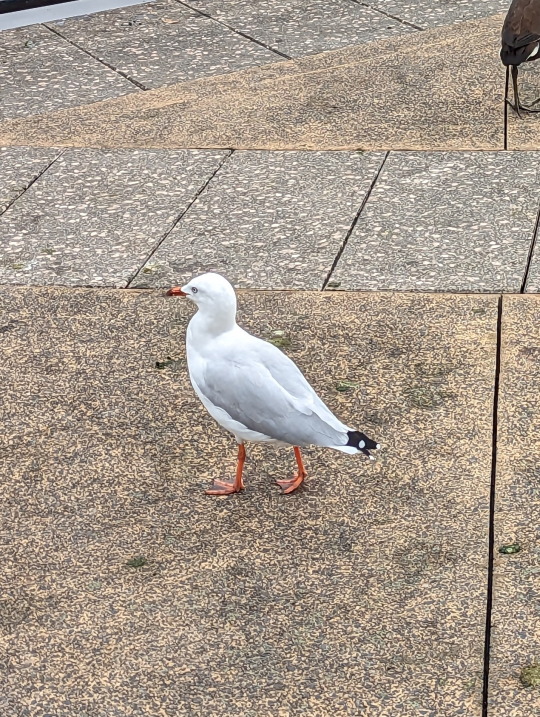

Charadriiformes: Chroicocephalus novaehollandiae

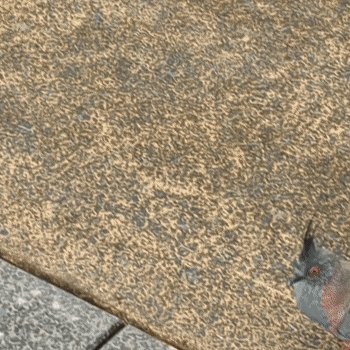
Columbiformes: Ocyphaps lophotes
Various southern bird life, and some GIF footage.
25/03/23 - Aves spp. - Wollongong, urban botanical garden
#Porphyrio melanotus#Australasian Swamphen#Gruiformes#Aves#Birds#birbs#birblr#birdlr#Anseriformes#Anser anser domesticus × anser cygnoides domesticus#Domestic Greylag × Domestic Swan Goose#Waterfowl#geese#Chenonetta jubata#ducks#Australian Wood Duck#Fulica atra#Eurasian Coot#Coots#Anas superciliosa ssp. superciliosa#Pacific Black Duck#Chroicocephalus novaehollandiae#Silver Gull#Charadriiformes#Ocyphaps lophotes#Columbiformes#Crested Pigeon#pigeons#vertebrates#gifs
381 notes
·
View notes
Photo
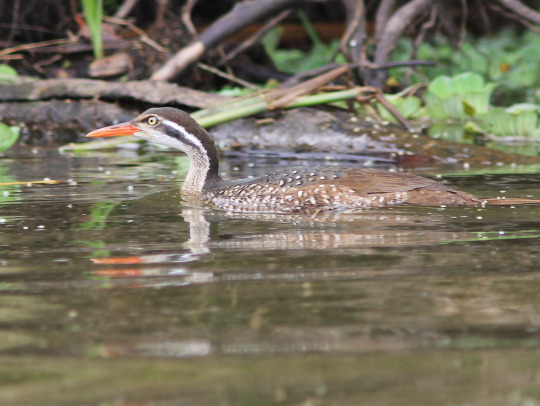
African Finfoot (Podica senegalensis)
Family: Finfoot Family (Heliornithidae)
IUCN Conservation Status: Least Concern
Found in flooded forests, mangrove swamps and vegetation-rich waterways throughout much of central, eastern and southern Africa, the African Finfoot is an unusual and extremely illusive species of aquatic bird notable for being one of only 3 living species of finfoots (a family of birds distantly related to cranes which are named for the fleshy fin-like lobes that extend from each of their toes.) Like other finfoots, the “finned” toes of the African Finfoot aid it in paddling as it swims along the surface but do not impair its ability to cling to branches or walk on land as fully webbed feet would. African Finfoots hunt in the water and feed mainly on aquatic or water-associated invertebrates such as mayflies, dragonflies and water snails, but may also catch small vertebrates such as frogs or venture onto land in search of terrestrial prey such as spiders. Due to their timid nature and preference for dense, inaccessible habitat little is known about this species’ life cycle but it has been observed that their breeding is associated with periods of heavy rainfall and that they build large, messy nests in branches overhanging water, with females returning to the nest to provide their chicks with prey until they are mature enough to join their mother on the water.
--------------------------------------------------------------------------
Image Source: https://www.inaturalist.org/taxa/62-Podica-senegalensis
#african finfoot#finfoots#bird#birds#zoology#biology#ornithology#animal#animals#wildlife#African wildlife#gruiformes
428 notes
·
View notes
Text
Common moorhen (Gallinula chloropus) photos I took 09/03/2024, Cromford canal, Derbyshire, UK
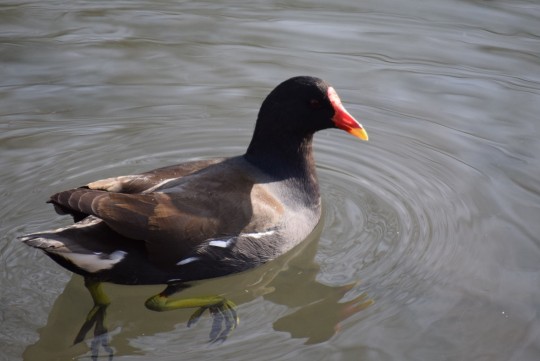

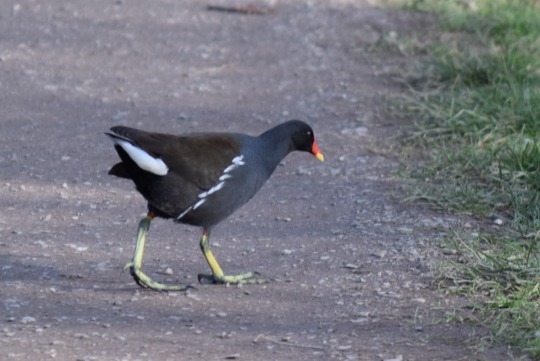
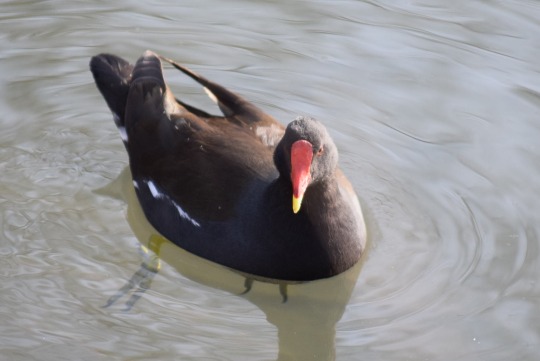
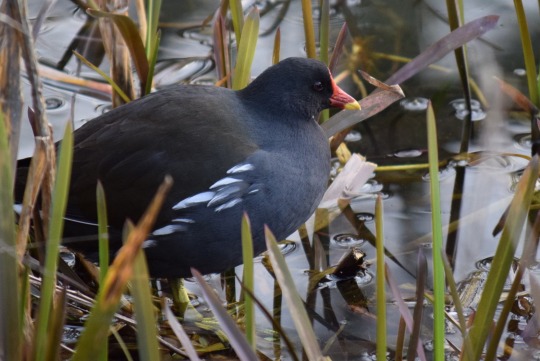
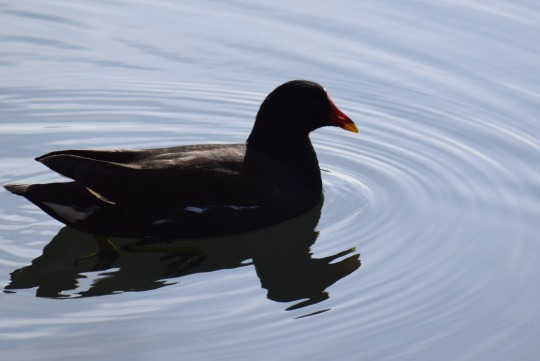



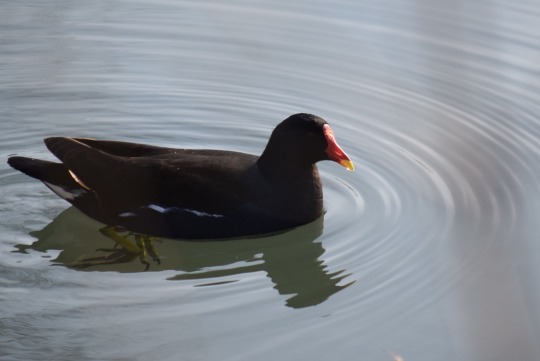
#nature#nature photography#animals#animal#wildlife#british nature#animal photography#wildlife photography#wild#wild animals#common moorhen#gallinula#moorhen#rails#rail#rallidae#gruiformes#water birds#bird watching#birding#birds#bird photography#birdwatching#bird#ornithology#british wildlife#british birds#wild animal#cute#adorable
56 notes
·
View notes
Text

[1714/10977] Brown crake - Zapornia akool
Order: Gruiformes
Family: Rallidae (rails)
Photo credit: Rakesh Das via Macaulay Library
1K notes
·
View notes
Text

Sandhill Cranes (Antigone canadensis), mother with "colt", family Gruidae, order Gruiformes, found over much of North America
Crane chicks are sometimes referred to as “colts”.
Sandhill Cranes breed in the far north of North America, and overwinter in the southern US and northern Mexico.
There are small separate southerly breeding populations in Mississippi, Florida, and Cuba, as well.
photograph by Denny Green
4K notes
·
View notes
Text

American Purple Gallinule
146 notes
·
View notes
Text

Reference photo from Weedon's World of Nature
#moorhen#common moorhen#gallinula chloropus#gallinula#rallidae#gruiformes#bird#birb#bird art#baby birds#art#artists on tumblr#digital art#tw eyestrain#cw eyestrain#wauk wauk
36 notes
·
View notes
Text
Porzana payevskyi Zelenkov et al., 2023 (new species)
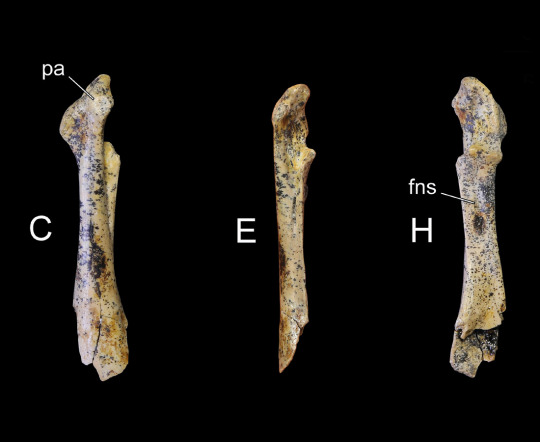
(Type coracoid [shoulder bone] of Porzana payevskyi, from Zelenkov et al., 2023)
Meaning of name: payevskyi = for Vladimir Payevsky [Russian ornithologist]
Age: Pleistocene (Gelasian)
Where found: Malye Goly, Irkutsk Oblast, Russia
How much is known: A partial right coracoid (shoulder bone)
Notes: Porzana is a genus of small rails including the spotted crake (P. porzana) of Eurasia and Africa, the sora (P. carolina) of North America, and the Australian crake (P. fluminea). P. payevskyi was large for a member of this genus and had a slightly more elongated coracoid than its close living relatives.
Reference: Zelenkov, N., E. Palastrova, N. Martynovich, A. Klementiev, A. Sizov, and N. Volkova. 2023. A tiny duck (Sibirionetta formozovi sp. nov.), a giant grey partridge (Titanoperdix felixi gen. et sp. nov.), a new rail (Porzana payevskyi sp. nov.), and other birds from the Early Pleistocene of Baikalian Siberia. Biological Communications 68: 261–272. doi: 10.21638/spbu03.2023.406
38 notes
·
View notes